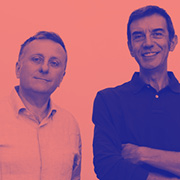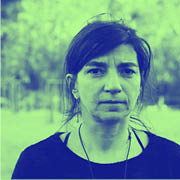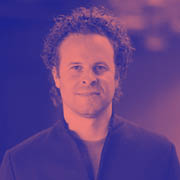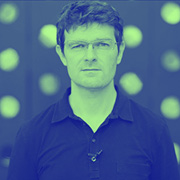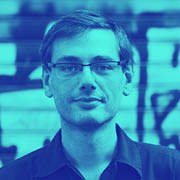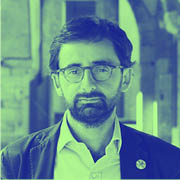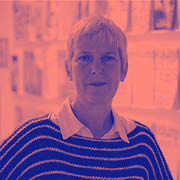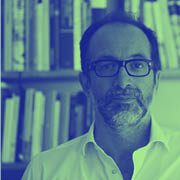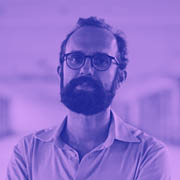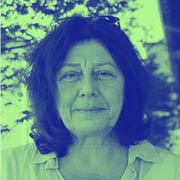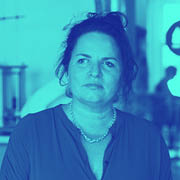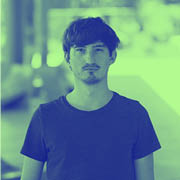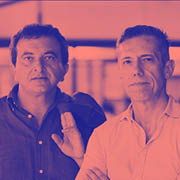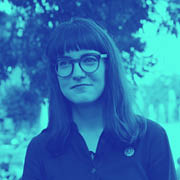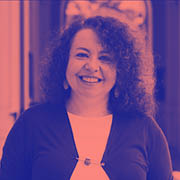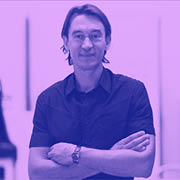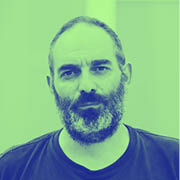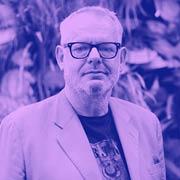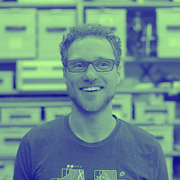ARCHITECTS, ACADEMICS
DANIELE FANZINI & FLAVIANO CELASCHI
Daniele Fanzini is an associate professor in Architectural Technology at Politecnico di Milano where he is director of Mantua Interdepartmental Laboratory Research and member of the Board of Professors for the PhD program in Architecture, Built Environment and Construction Engineering.
Flaviano Celaschi is a professor of design at the University of Bologna and Vice-Dean of the Engineering and Architectural School. He was previously Dean of the INDACO department at Politecnico di Milano and founder of POLI.Design, the first university consortium in design research in Italy.
TERMS
adaptive
immateriality
immediacy
inclusivity
NEW ECOLOGIES
ADAPTIVE
The term adaptive indicates the management of the complexity of urban realities. Generally, it refers to the concept of ecology as the study of the interactions between organisms and their environment. Bringing this concept to the built environment, different ideas of ecology emerge, such as the ecology of value, the ecology of the urban, the ecology of innovation and of the creative sector. In this ecological dimension of the urban environment, the territory assumes a key role as it mediates, both in a practical and cognitive way, the relationship between the local actors and their territory. The local actors and the territory behave as one collective, future oriented organism. In this dimension of ecology the territory assumes a creative role: to facilitate the competition between the subjects equipped to adapt to the changes of their environment. In this sense, the creative role of the territory is to allow the most talented organisations to adapt and to attract new resources in order to compete.
URBAN ASSETS
IMMATERIALITY
Immateriality expresses the material values which are necessary to build places. The crisis that we are witnessing is an economic crisis but also one of values. With values I refer to new values, often related to economy and the economic value of products. Culture, for example, has an immaterial value that today is considered important in generating new processes, new economies and innovations. I believe that a transformation based on immaterial values such as culture can do a lot for the future of our cities.
DIGITAL TOOLKIT
IMMEDIACY
Immediacy means the necessity to operate through mechanisms, processes and behaviours that are easy to understand. Let me answer with an anecdote. Some time ago, together with Flaviano Celaschi, we developed a project for the urban regeneration of a small town in the municipality of Vigolzone, in Piacenza, involving participatory processes with both citizens and economic partners. This experience was significant for us, as researchers, because it provided the opportunity to facilitate these processes of construction of the ‘new’, working mostly on the immediate communication of the idea. Our task was to capture the new and translate it to something purely visible and easily communicated that could lead to new ideas and new concepts. Immediacy is the ability to represent the new that emerges through such participatory design processes.
NEW COLLECTIVES
INCLUSIVITY
In a report ‘Global campaign for Urban Governance’ UN-Habitat introduced the term ‘inclusive cities’ to define a strategy of intervention that could improve the ways we govern and manage the city. Inclusive cities represent a strategy that could involve local actors formulating new, shared objectives together that could go along with their actions for a desired future. In this logic, the term inclusive city represents not only the vision, but also the desired result and the process to accomplish this result. It is based on this that I propose the term inclusivity, to underline its double value in the design process.
INTERVIEWED BY
GIANPIERO VENTURINI
Fanzini & Celaschi discuss the importance of adopting an anticipatory approach to design as well as the need to think beyond the ‘words’ of the urban vocabulary, stressing the importance of materialising the vocabulary through imaginings and models of the future city.
link
PROJECT ANTICIPATION
‘projectanticipation.org’
link
VIGOLZONE PARTECIPA
‘vigolzonepartecipa.org’
GV:
Is there an experience that you would like to share regarding the idea of a vocabulary?
DF:
Talking about how it is important to establish a taxonomy in a specific sector, such as research or any other activity, I would like to talk about this experience I had 10 years ago, here at the Politecnico di Milano when, thanks to a European grant, we started a studio to prototype a system of competitive intelligence applied to the construction sector. The goal was to define a precise taxonomy to search the internet through refined search engines. The most difficult part of this research was to define this taxonomy, which we tried to form through a challenging process that involved experts from different disciplines. They helped us select the correct terms, connect them to each other, avoid misleading similarities and finally introduce all these terms into this refined search engine that would help us filter the web to find informative sources that could be useful to the people working in the architecture and construction industry. This project produced very interesting results, which have been published in a volume called ‘Competitive Intelligence applied to the Construction Sector’.
GV:
Project anticipation comes from the industrial design field, it is relatively new to architects. Can you explain this term?
DF:
I will try to give a definition of project anticipation, and then I will explain how to apply this anticipatory dimension of a project to the built environment. With the term project anticipation we address the field of activity and the future studies oriented to action. Anticipation, as opposed to forecast or foresight, does not aim at predicting in a traditional sense. It aims at starting processes of change, and supports the common development of new ideas and possible futures. Last year, we organized a conference, in order to understand how to apply the idea of project anticipation to the built environment. From the contributions to the conference four lines of research emerged: The first one is related to innovation of new materials, technologies and possibilities for design. It is a research that does not need a specific client and it transfers interesting results from other scientific sectors, in this case to the field of urban and architectural design. The second line looks at long-term projects that investigate a far future, establishing high profile goals. The field of design and sustainability can be an interesting example of this. The third field of research explores unknown territories for the discipline, almost on the verge of utopias. These ideas would not appear if projects would aim solely at answering the concrete needs of a client. The fourth direction is one of anticipating projects but also project briefs, asking why and what, before asking how.
Vigolzone Partecipa represents an interesting example in this direction. In that case the project developed regardless of a specific commission. It was a bottom up action, based on the contribution of groups of autonomous citizens that promoted to the public administration and to financial partners, the idea to start a project on the valorisation of the local cultural heritage.
image
VIGOLZONE PROCESS
image courtesy of Vigolzone Partecipa
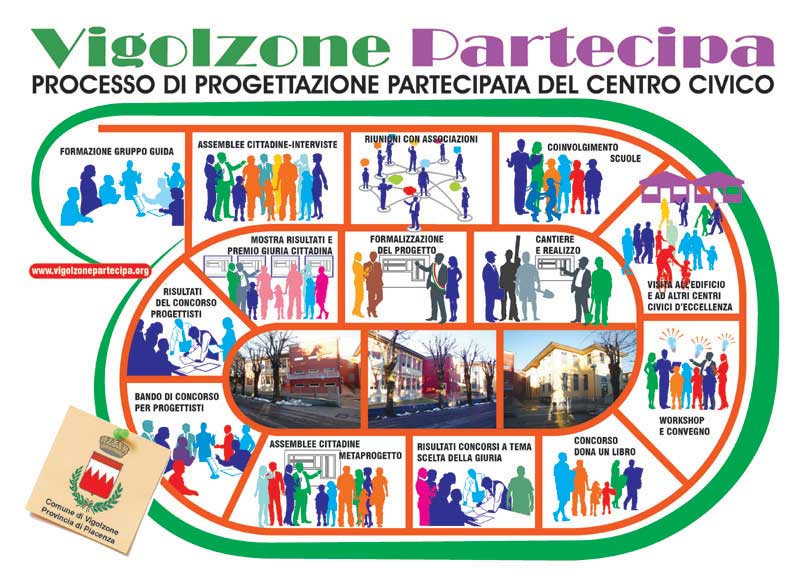

GV:
Is there a concept that encompasses the four terms you introduced: Adaptive, Immateriality, Immediacy, Inclusivity?
FC:
Community is a word that could summarize the work we have been doing together with Prof. Fanzini.
The word community has two nuances of meaning. One has quantitative aspects to it: our neighbours are our community. We do not choose our neighbours, they are ‘given’ to us and we have to spend some time with them, and that is an important part of our urban life. On the other hand community is also the group of people that we choose to be part of; that share with us the same passions and with whom we meet in a ‘designed’ way, when we decide to spend qualitative time with them. In the contemporary city, neighbours and community do not always overlap.
This dissonance signifies an urban environment where these two terms are not perceived to have one meaning. We constantly feel the burden of having neighbours that we do not want, that we do not want to spend time with and, if we do, we perceive it as a tiring imposition. Another portion of our time, we spend with our community that does not necessarily live close to us. If we are lucky maybe it is located in the same city, otherwise it is somewhere else in the world. With this community we continuously try to create relationships that often do not have a visible expression in the city. The term community, as it was defined during the industrial revolution in Italy, in situations such as the one of Olivetti, can summarize very well what we hope to achieve thinking about the future of the city.
The term community, as it was defined during the industrial revolution in Italy, in situations such as the one of Olivetti, can summarize very well what we hope to achieve thinking about the future of the city.
GV:
This project is about creating a New Vocabulary of Terms, what do you think defines contemporary vocabulary and why is it useful to reflect on this topic?
FC:
This project makes me think of other examples like the Encyclopédie of d’Alembert and Diderot, where the part written with words, is as important as the part made of images and drawings, particularly if we think about the revolutionary role that this publication played in the construction of modernity, and the necessity to talk to a lowly educated public. In today’s Europe this is comparable to the need to reach to the plurality of languages and cultures. The representation of the future city is as important now as those images of the Encyclopédie were in their time.
image
ENCYCLOPEDIA OF d'ALEMBERT & DIDEROT
‘diderot.alembert.free.fr/’
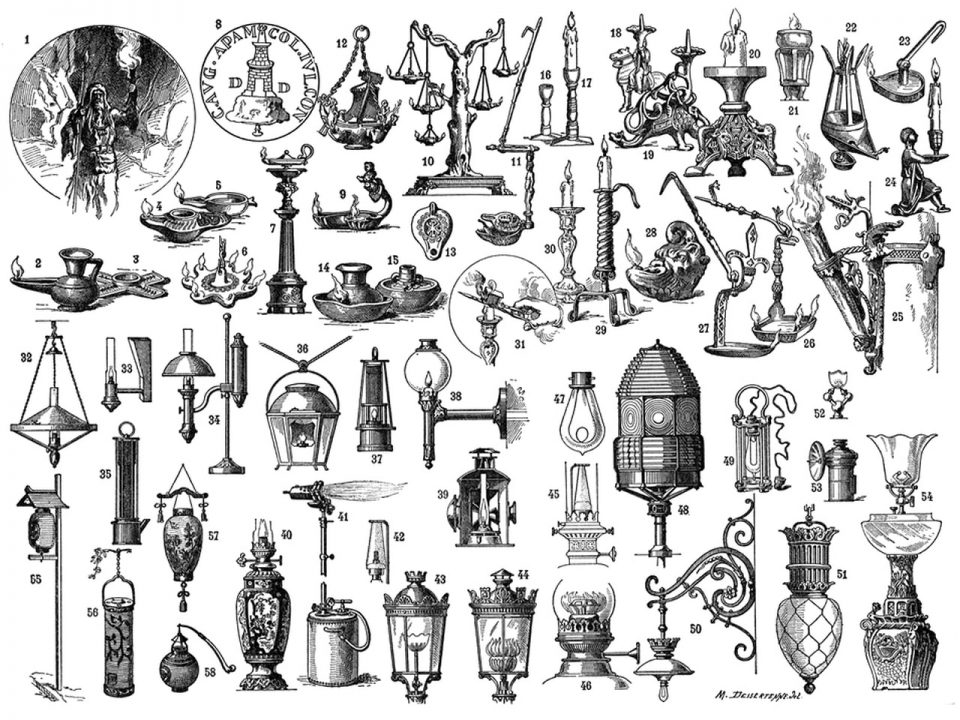

FC:
Another reference would be Viollet-le-Duc when, during romanticism, he envisioned the Middle Ages through a dictionary but also by building a real model such as Carcassonne that has little to do with the Middle Ages, but derives directly from the imaginary power of Viollet-le-Duc. Through this exercise of building a gigantic system of components, he re-thinks the different architectural elements almost according to an industrial prefabricated logic. Viollet-le-Duc imagined not a city of the future but one of the past, and he did that by building a vocabulary to describe all the single components. He also did it by drawing the city and building a real model that would become a great success in Europe: from that moment on, all Europe was inspired by his specific way of re-constructing the Middle Ages.
Regarding urgencies, it is very interesting to look beyond words for the signs, forms and functions that can better represent the city we want. We need models. We need to imagine the city of the future. I think cities have always been built with a reference model. The most embarrassing thing at the moment is the absence of a model.
We need to imagine the city of the future. I think cities have always been built with a reference model. The most embarrassing thing at the moment is the absence of a model.
GV:
If you would have to imagine which form a vocabulary could we develop, what would your suggestions be?
FC:
It would be interesting to imagine something along the line of Second Life: a vocabulary that is a digital imaginary world and mirrors the real one. Being digital, this vocabulary could be participatory and would be enriched and modified in real time from all over the world. It could be interpreted by any culture and in any language. So a sort of Second Life, Second Urban Model, where to put hands and brains at work to modify and leave traces of the modifications as you do in a text to elaborate, as a way for everybody to see the final result but also to re-trace the process that has been done to reach the result and see the different steps, necessary to get to that model.
GV:
I would like to understand how the meaning of the project anticipation depends on the field of application, which in your case is always different. Could you then explain what do you mean with project anticipation?
FC:
The definition of project anticipation is based on the four keywords that Fanzini talked about, adaptivity, immateriality, immediacy and inclusivity. In addition, the certainty that the future cannot be predicted leaves us with the necessity to build this future. The logics with which we deal with the construction of the future are the following ones. Firstly, the future is not something that we look at from the present. It actually works the opposite way. In order to build the future, we have to position ourselves in the scenario that we want to reach. We have to be in the future and look at the present in order to construct the chain of events that will lead us to that future.
The second condition for the construction of the future is that we have to persuade a good number of people that the future scenario we hope is a good one, will also be a good future for all these people. The construction of the future is shared. There is not one person that can imagine and realise the future alone. In that sense, design cultures are pivotal for every profession. Today we call this design thinking, as the necessity to infuse different professional cultures with the capacity to work as the designer grows. This idea of ‘contamination’ in a positive sense means to share the logic behind projects and practices with a large number of people, as a way to free them from the contingency of the present and to show them that they actively shape their future.
